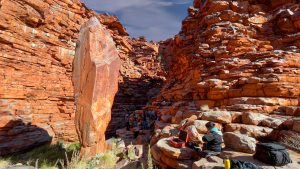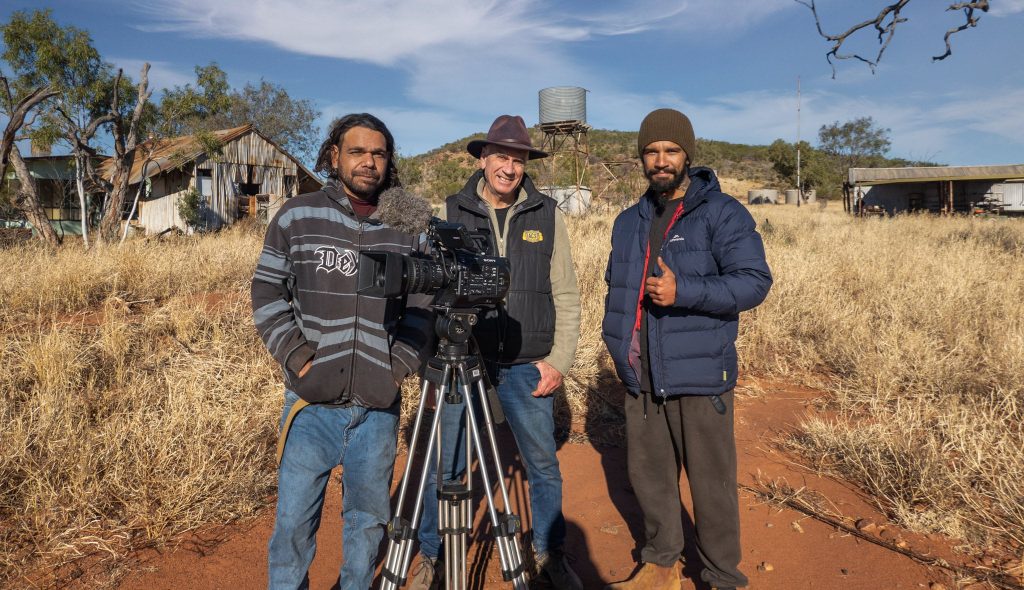Shooting in bright sunlight
Getting good results shooting outdoors on a bright day is a challenge. Video just looks better when you don’t have to work in the glare of the sun. You’ll need some basic sun controlling tools to make it work or your scene could end up looking like Funniest Home Videos.
Shoot your wide shots early in the morning and from a position where the sun is lighting the scene from one side; side light will get the precious light and shadow happening.
You may end up shooting medium/dialogue shots and close-up/dialogue shots in the middle of the day. This is not too bad as you can use an overhead diffusion panel to shoot the closer shots. You’ll also need reflectors; some means of evening up the deep shadow areas. Use the white side to bounce light into backlit faces.
As mentioned, part of your sun controlling tools should be an overhead shade cloth and some means of suspending it over the actor/subject for close-ups and medium shots where there’s harsh full sunlight falling on faces. A overhead silk that allows most of the sunlight through (half stop or full stop) is best, otherwise it looks like your actors are performing in an unseen mystery poolside pergola!
Make sure that the backgrounds are not too bright. A small left or right shift of your camera to a position where there are trees behind for example is often enough to give you the best overall balance in this situation.
Use a small overhead diffusion panel
A 6 foot X 6 foot scrim/silk or very light sail cloth clipped into a frame is the ideal tool. You can then use reflectors to bounce light into the faces with a direct solid kick off the sun to continue that sunny feel. Late afternoon or early morning light is very flattering, and using this direct front light is the way to go, so don’t be afraid to shoot without reflectors and scrims at this time.
White balance your camera from time to time and if you choose to continue shooting when the odd cloud rolls over, make sure that you balance to that quality of light. I do a manual white balance in full sun (“B” position) and a balance in cloud cover (“A” position) and switch between the two as needed – The Z1 has this feature. This will help to disguise the impact of totally different light colour and totally different light characteristics.
Finally, try to position the camera further back from the subject and shoot your close-ups on the telephoto end of the zoom and use the built-in ND filters to get you an aperture of around f5.6. This will give you some nice focus fall off behind and in general, be more flattering, especially if your have the light falling on your subject under control.
I hope for an overcast day when I have to shoot outside. In the filtered and indirect soft light video still looks vibrant and in some cases more colourful than in full sun, and the evenness of this light makes it easier to get through the shots. Wide shots do look better in sunlight, you just have to reign-in the harshness of the sun by trying some of the ideas suggested. As a last thing, make sure the sun doesn’t hit the front glass of lens. There is no need to highlight every particle of perfectly focus dust sitting on the front lens element.
© 2021 Pieter de Vries ACS

 Filming of a feature length documentary is underway in the Central Desert region of the Northern Territory. The film is being written, produced and filmed by PAW Media and Communications (Pintubi Anmatjere Warlpiri) based in Yuendumu, 300k NW of Alice Springs.
Filming of a feature length documentary is underway in the Central Desert region of the Northern Territory. The film is being written, produced and filmed by PAW Media and Communications (Pintubi Anmatjere Warlpiri) based in Yuendumu, 300k NW of Alice Springs.